- Home
- Stephen Baxter
Exultant dc-2 Page 3
Exultant dc-2 Read online
Page 3
“OK, guys,” Pirius said to Cohl and Enduring Hope. “You heard Dans. Let’s set a record.”
That won him ribald comments, but he could see that both Cohl and Hope were calling up fresh displays and hunching over their work. For a maneuver like this, all three of them would have to work closely together, with Pirius controlling the line, Cohl monitoring Claw’s altitude over the star’s surface, and Hope watching attitude and the ship’s systems. As they settled to their tasks — and so put aside their Doctrine manuals or illicit prayer beads or whatever else they turned to for comfort — Pirius felt reassured. This was a good crew, at their best when they were committed to what they had been trained to do.
Light flared over his Virtual displays. “Woah…”
The star’s surface had changed. Cracks gaped, and a brighter light shone from within. For a few seconds there was turmoil, as the whole surface shattered and melted, and remnant fragments swam. But as suddenly as it had begun, the motion stopped, and the crust coalesced once more, settling down to a new smoothness.
“Dans — what was that?”
“Starquake,” said Dans briskly.
“Maybe it’s time you told me what a magnetar is…
When this remnant was hatched out of its parent supernova explosion, it happened to be spinning very rapidly — turning a thousand times a second, perhaps even faster. For the first few milliseconds of the neutron star’s life, the convection in the interior was ferocious, and where the hot material flowed it generated huge electrical currents. The whole thing was like a natural dynamo, and those tremendous currents generated an intense magnetic field. As the star lost energy through gravity and electromagnetic radiation, the spin slowed down. But a good fraction of the tremendous energy of that spin poured into the magnetic field.
Dans said, “The field is still there, lacing the star’s interior. The field will decay away quickly — quickly, meaning in ten thousand years or so. But while the star is young—”
“And the crust quake?”
“The magnetism laces the solid surface, locking it to the interior layers. But the star is slowing down all the time, and the whirling interior drags at the solid crust. Every so often something gives. Happens all the time — like, hourly. But every so often the magnetic field collapses altogether, and the star flares, and… Lethe.”
“What?”
“Pirius, I’ve got another plan.”
“Make your flyby over these coordinates.” Data chattered into the Claw’s systems.
“Why?”
“Because a flare is about to blow there.” She downloaded a rapid Virtual briefing: a major collapse of the planet’s magnetic field, more faulting in the crust — and a huge fireball punching out of the star’s interior, a fist of compressed matter exploding out of its degenerate state. The magnetic field would hug the fireball to the star’s surface, whirling it around in a manic waltz.
The energy released by this event, it seemed, would be enough to cause ionospheric effects in the atmospheres of planets across the Galaxy. “Think of it,” Dans breathed. “This flare will batter the upper air of Earth itself — though not for twenty-eight thousand years or so. And you are going to be sitting right on top of it.”
“Tell me why this is good news,” Pirius said grimly.
Dans paged through Virtual data, copying everything to Pirius. “Pirius, in the middle of that flare the structure of spacetime itself is distorted. Now, we know Xeelee ships fly by swimming through spacetime, that their essence is controlled spacetime defects. Surely not even a Xeelee can survive that.”
“And so—”
“So you fly through the middle of the flare. See how it will arch through the magnetic field? If you pick your course right you can avoid the worst regions, while leading the Xeelee right into it.”
“But if a Xeelee can’t survive,” Enduring Hope pointed out reasonably, “how can we?”
Pirius said, “We don’t have a choice right now.”
“Four minutes to closest approach,” Dans said.
Pirius swept his fingers through Virtual displays. “Cohl, I’m sending you Dans’s coordinates. Let’s aim for that flare. We can’t end up any more dead, and at least it’s a chance. Dans — we’ll need time to plot the maneuver. How long will the flare last?”
Dans hesitated. “Only a second or so at its fullest extent. Pirius, a neutron star is a small, very energetic object. Things happen fast… Oh.”
For a moment Pirius had actually allowed himself hope; now that warm spark died. It was just too fast. “Right. So that millisecond is all we will have to compute our course, to lay it in, and to execute the maneuver.”
Cohl said, “It would take our onboard sentient tens of seconds to compute a course like that. Even if we had prior data on the shape of the flare. Which we don’t. Of course a Xeelee could do it.”
“Three minutes,” Hope said evenly.
Pirius sighed. “You know, just for a moment you had me going there, Dans.”
Dans snapped impatiently, “Lethe, you guys are so down. Maybe there’s a way even so. Pirius, have you ever heard of a Brun maneuver?”
“No.”
“Pilot school scuttlebutt. Somebody tried it, oh, a year or more back.”
Pirius hadn’t heard of such a thing. But the turnover in pilots at Arches Base was ferocious; there was little opportunity for field wisdom to be passed on.
“It didn’t work—”
“That’s reassuring.”
“But it could have,” Dans said. “I looked into it — ran some simulations — thought it might be useful some day.”
“Two minutes thirty.”
“Pirius, listen to me. Stick to your course; make for the flare. But keep listening. I’ll compute your maneuver for you. A way through the flare.”
“That’s impossible.”
“Sure it is. And when I download the new trajectory you’d better be prepared to splice it into your systems.” Dans peeled away.
“Where are you going?”
“If this doesn’t work out, don’t touch my stuff.”
“Dans!”
“That’s the last we’ll see of her,” Enduring Hope said laconically.
“Two minutes,” Cohl said. “One fifty-nine…”
Pirius shut her up.
As the Claw fell through space there was no noise, no sense of motion. The Xeelee’s slow convergence was silent, unspectacular. Even the neutron star would be invisible for all but a few seconds of closest approach. It was as if they were gliding along some smooth, invisible road.
The crew continued to work calmly, the three of them calling out numbers and curt instructions to each other. The Assimilator’s Claw was drenched with artificial intelligence, sentient and otherwise, and its systems were capable of processing data far faster than human thought. But the systems were there to support human decision-making, not to replace it. That was the nature of the greenship’s design, which in turn reflected Coalition policy, under the Doctrines. This was a human war and would always remain so.
There was no sense of peril. And yet these seconds, which counted down remorselessly inside Pirius’s head, would likely be the last of his life.
There was a flare of blue light, dead ahead, FTL blue — and then a streak of green. It was a greenship, cutting across his path. Suddenly data was chattering into the Claw’s systems. It was a new closest-approach trajectory.
Pirius saw Cohl sit up, astonished. “Where did that come from? Pilot—”
“Load the course, Navigator.”
A Virtual coalesced before Pirius: Dans’s head, disembodied. Her face was small, round, neat, with a wide, sensual mouth, a mouth made for laughing. Now that mouth grinned at Pirius. “Boo!”
“Dans, what—”
“It’s not me, it’s a downloaded Virtual. The real Dans will be hitting the surface of the star in” — she closed her eyes, and the image wavered, blocky pixels fluttering, as if she was concentrating — “thr
ee, two, one. Plop. Bye-bye.”
Pirius felt a stab of regret through his fear, bafflement, adrenaline rush. “Dans, I’m sorry.”
“There was no other way — no other trajectory.”
“Trajectory from where?”
“From the future, of course. Pirius, you’re twenty seconds from closest approach.”
He glimpsed a splash of red, wheeling past the blister. It was the neutron star.
Dans said, “You need to cut in your GUTdrive. On my mark—”
“Dans, that’s insane.” So it was; the antiquated GUTdrive was a last-resort backup system.
“I knew you’d argue. Your sublight won’t work. Do it, asshole. Two, one—”
In the heart of the GUTdrive, specks of matter were compressed to conditions not seen since the aftermath of the Big Bang; released from their containment, these specks swelled immensely. This was the energy that had once driven the expansion of the universe itself; now it heated asteroid ice to a frenzied steam and forced it through rocket nozzles. A GUTdrive was just a water rocket, a piece of engineering that would have been recognizable to technicians on prespaceflight Earth twenty-five thousand years before.
But it worked, even here. A new light flared behind the ship, a ghostly gray-white, the light of the GUTdrive.
Dans winked at Pirius. “See you on the other side.” The Virtual collapsed into a cloud of dispersing pixels.
The neutron star cannonballed at Pirius, suddenly huge. It was a flattened orange, visibly three- dimensional, its surface mottled by electric storms. It slid beneath Claw’s prow, and for a moment, continents of orange-brown light fled beneath Pirius’s blister. All these impressions in a second; less. But now a stronger light was looming over the horizon, yellow-white: it was the site of the flare, a grim dawn approaching.
And in the same instant the Claw juddered, shook, its drive stuttering. What now? Diagnostics popped up before Pirius. Around a Virtual of the GUTdrive core, shadowy shapes swarmed. Quagmites, he saw: the strange entities that were attracted by every use of a GUTdrive in this region — living things maybe, pests for sure, feeding off the primordial energy of the GUTdrive itself, and causing the mighty engine to stutter.
“The fly’s on us!” Cohl cried.
When Pirius glanced at the reverse view he saw the Xeelee fighter. Its night-dark wings flexed and sparked as it swam through space after him. He had never seen a Xeelee so close, save in sims: he didn’t know anybody who had, and lived. It was more than inhuman, he thought, more than just alien; it was a dark, primeval thing, not of this time. But it was perfectly adapted to this environment, as humans with their clumsy gadgetry were not.
And it was still on his tail. All he could do was fly the ship; there was absolutely nothing he could do about the Xeelee.
Ahead, light flared. Over the horizon came rushing a massive flaw in the star’s crust, a pool of blue- white light kilometers wide from which starstuff poured in a vertical torrent, radiating as much energy in a fraction of a second as Earth’s sun would lose in ten thousand years. An arch, yellow-
white, was forming above the star’s tight horizon, kilometers high. In places the arch feathered and streamed, tracing out the lines of the magnetic field that restrained it.
On a neutron star, events happened fast. The rent in the surface was already healing, the arch collapsing almost as soon as it had formed, its material dragged down by the star’s magisterial gravity field.
And the Claw flew right underneath it.
Pirius’s blister shuddered as if it would tear itself apart. Those mottled surface features whipped beneath, and the arch loomed above him. He had never known such a sensation of sheer speed. He might not live through this, but Lethe, it was quite a ride.
There was a punch in the small of his back, the ghost of hundreds of gravities as the Claw kicked its way out of the star’s gravity well.
The neutron star whipped away into darkness. The arch had already collapsed.
And in the last instant he glimpsed the Xeelee, behind him. No longer an implacable, converging foe, it was folding over, as if its graceful wings were crumpled in an invisible fist.
The Assimilator’s Claw hung in empty space, far from the neutron star. The crew tended their slight wounds, and tried to get used to still being alive. They saw to their ship’s systems; the encounter with the quagmites had done a good deal of damage to the GUTdrive.
And they reconstructed what had happened during those crucial moments at the magnetar.
At its heart the magnetic field embracing the flare had been as strong as any field since the first moments of the universe itself. At such field strengths atoms themselves were distorted, forced into skinny cylindrical shapes; no ordinary molecular structure could survive. Photons were split and combined. Even the structure of spacetime was distorted: it became birefringent, Pirius learned, crystalline.
It was this last which had probably done for the Xeelee. Nobody knew for sure how a nightfighter’s sublight drive worked. But the drive seemed to work by manipulating spacetime itself. In a place where spacetime crystallized, that manipulation could no longer work — but the Claw’s much cruder GUTdrive had kept functioning, despite the quagmites.
All that was straightforward enough. Just physics.
“But what I can’t get my head around,” Pirius told Dans’s Virtual, “is how you appeared out of nowhere, and squirted down the right evasive maneuver for us, based on a knowledge of the flare’s evolution before it happened.”
Dans said tinnily, “It was just an application of FTL technology. Remember, every FTL ship—”
“Is a time machine.” Every child learned that before she got out of her first cadre.
“I pulled away. Out of trouble, I watched the flare unfold, recorded it. I took my time to work out your optimal path — how you would have avoided destruction if you’d had the time to figure it out.”
Pirius said, “But it was academic. You got the answer after we were already dead.”
“And I had to watch you die,” said Dans wistfully. “When the action was over, the Xeelee out of the way, I used my sublight to ramp up to about a third lightspeed. Then I cut in the FTL.”
Cohl understood; “You jumped back into the past — to the moment just before we hit the flare. And you fed us the maneuver you had worked out at leisure. You used time travel to gain the time you needed to plot the trajectory.”
“And that’s the Brun maneuver,” Dans said with satisfaction.
“It’s some computing technique,” Cohl mused. “With the right vectors you could solve an arbitrarily difficult problem in a finite time — break it into components, feed it back to the source…”
Pirius was still trying to think it through. “Time paradoxes make my head ache,” he said. “In the original draft of the timeline, Claw was destroyed by the flare, and you flew away. In the second draft, you flew back in time to deliver your guidance, and then you — that copy of you — flew into the neutron star.”
“Couldn’t be helped,” Dans said.
He could see she was waiting for him to figure it out. “But that means, in this new draft of the timeline, we survived. And so you don’t need to come back in time to save us. We’re already saved.” He was confused. “Did I get that right?”
Hope said, “But there would be a paradox. If she doesn’t go back in time, the information that future- Dans brought back would have come out of nowhere.”
Cohl said, “Yes, it’s a paradox. But that happens all the time. A ship comes limping back from a lost battle. We change our strategy, the battle never happens — but the ship and its crew and their memories linger on, stranded without a past. History is resilient. It can stand a little tinkering, a few paradoxical relics from vanished futures, bits of information popping out of nowhere.” Cohl evidently had a robust view of time-travel paradoxes. As an FTL navigator, she needed one.
But Pirius’s only concern was Dans. “So can you save yourself?”
> “Ah,” Dans said gently. “Sadly not. More than one Xeelee chased us after all. If I hadn’t hung around to work out your course I might have got away. I’m all that’s left, I’m afraid. Little pixellated me…”
“Dans” — Pirius shook his head — “you gave your life for me. Twice.”
“Yeah, I did. So remember.”
“What?”
She glared at him. “When you get back to Arches, leave my stuff alone.” And she popped out of existence.
For long minutes they sat in silence, the three of them in their blisters.
“Here’s something else,” Cohl said at last. “To get back to Arches from here we’ll have to complete another closed-timelike-curve trajectory.”
“A what?… Oh.” Another jump into the past.
“We’ll arrive two years before we set off on the mission.” She sounded awed.
Hope said, “I’ll meet my past self. Lethe. I hope I’m not as bad as I remember.”
“And, Pirius,” Cohl said, “there will be a younger version of Dans. A third version. Dans won’t have to die. None of this will be real.”
Pirius really did hate time paradoxes. “Time loops or not, we lived through this. We will remember. It’s real enough. Navigator, do you want to lay in that course?”
“Sure…”
Hope said dryly, “You might want to delay a little before kicking off for home, Pilot. Take a look.” He projected a Virtual into their blisters.
It was a shape, drifting in space. Pirius made out a slender body, crumpled wings folded. “It’s the fly,” he breathed.
Hope said, “We have to take it back to base.”
Cohl said, “We captured a Xeelee? Nobody ever did that before. Pirius, you said you wanted to make your name stand out. Well, perhaps you have. We’ll be heroes!”

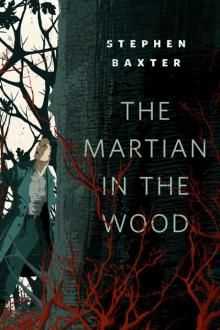 The Martian in the Wood
The Martian in the Wood THE H-BOMB GIRL
THE H-BOMB GIRL World Engine
World Engine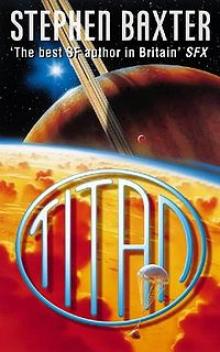 Titan n-2
Titan n-2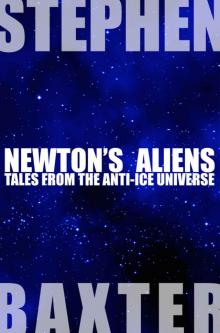 Newton's Aliens: Tales From the Anti-Ice Universe
Newton's Aliens: Tales From the Anti-Ice Universe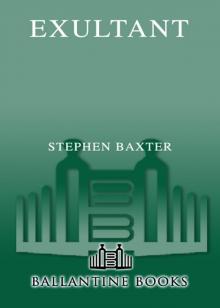 Exultant
Exultant Manifold: Origin
Manifold: Origin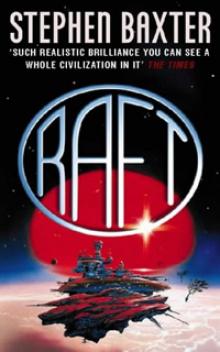 Raft xs-1
Raft xs-1 Bronze Summer n-2
Bronze Summer n-2 Transcendent
Transcendent Stone Spring
Stone Spring Coalescent
Coalescent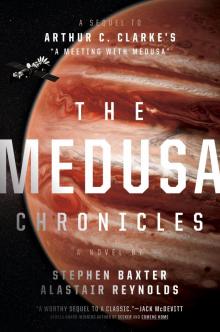 The Medusa Chronicles
The Medusa Chronicles Origin m-3
Origin m-3 Silverhair tm-1
Silverhair tm-1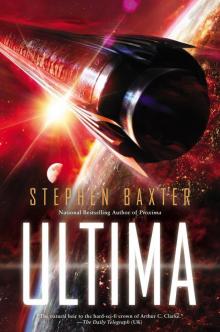 Ultima
Ultima Voyage n-1
Voyage n-1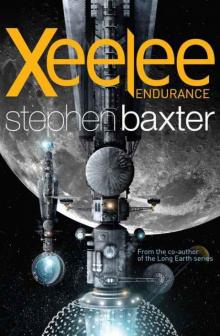 Xeelee: Endurance
Xeelee: Endurance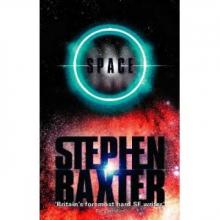 Space m-2
Space m-2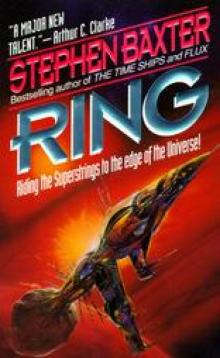 Ring xs-4
Ring xs-4 Raft
Raft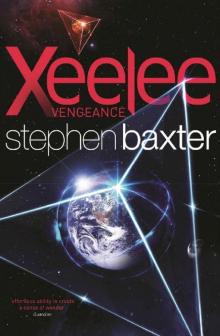 Xeelee: Vengeance
Xeelee: Vengeance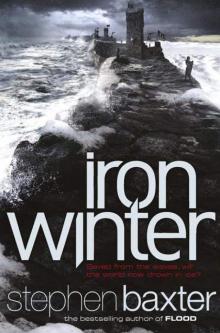 Iron Winter n-3
Iron Winter n-3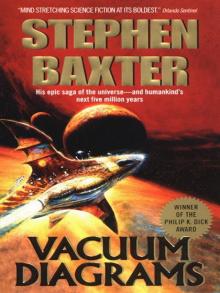 Vacuum Diagrams
Vacuum Diagrams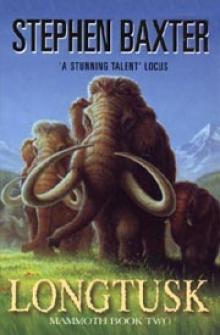 Longtusk tm-2
Longtusk tm-2 Proxima
Proxima Evolution
Evolution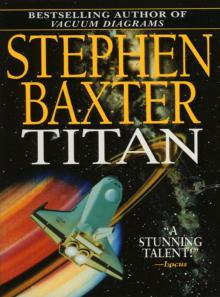 Titan
Titan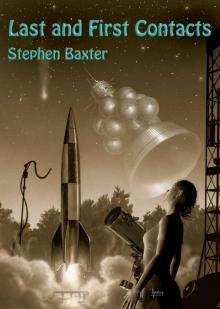 Last and First Contacts (Imaginings)
Last and First Contacts (Imaginings)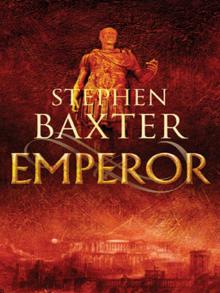 Emperor
Emperor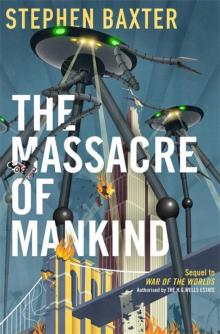 The Massacre of Mankind
The Massacre of Mankind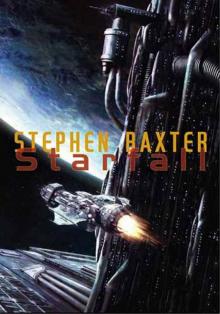 Starfall
Starfall Doctor Who - The Wheel of Ice
Doctor Who - The Wheel of Ice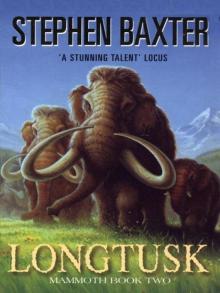 Longtusk
Longtusk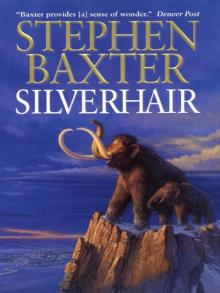 Silverhair
Silverhair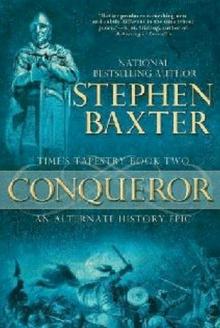 Conqueror tt-2
Conqueror tt-2 Flood
Flood Flood f-1
Flood f-1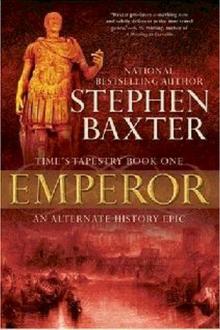 Emperor tt-1
Emperor tt-1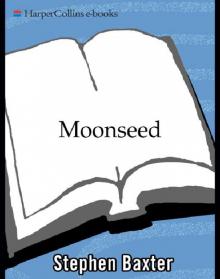 Moonseed
Moonseed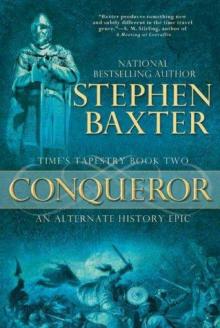 Conqueror
Conqueror Timelike Infinity xs-2
Timelike Infinity xs-2 The Ghost Pit
The Ghost Pit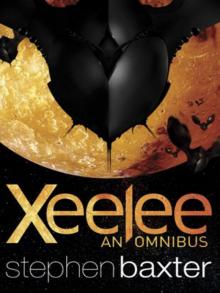 Xeelee: An Omnibus: Raft, Timelike Infinity, Flux, Ring
Xeelee: An Omnibus: Raft, Timelike Infinity, Flux, Ring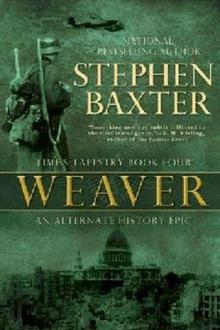 Weaver tt-4
Weaver tt-4 Landfall: Tales From the Flood/Ark Universe
Landfall: Tales From the Flood/Ark Universe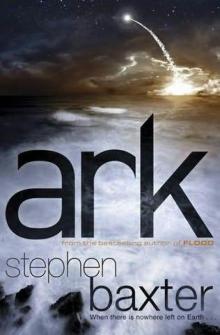 Ark
Ark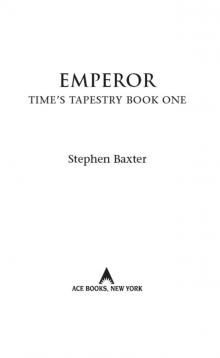 Emperor: Time’s Tapestry Book One
Emperor: Time’s Tapestry Book One Space
Space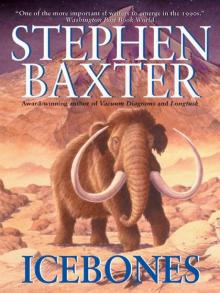 Icebones
Icebones Manifold: Space
Manifold: Space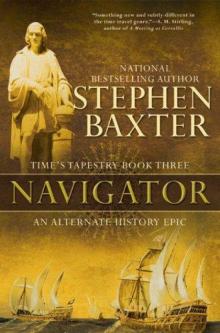 Navigator
Navigator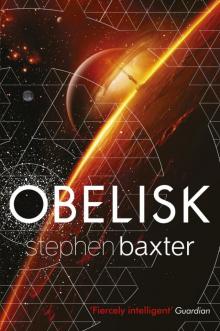 Obelisk
Obelisk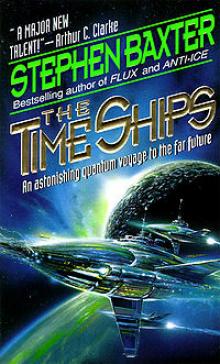 The Time Ships
The Time Ships Bronze Summer
Bronze Summer Resplendent
Resplendent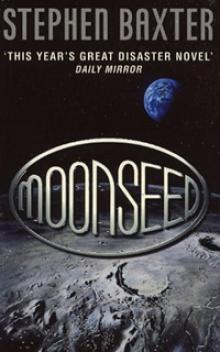 Moonseed n-3
Moonseed n-3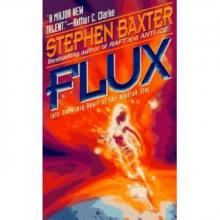 Flux xs-3
Flux xs-3 Transcendent dc-3
Transcendent dc-3 Icebones tm-3
Icebones tm-3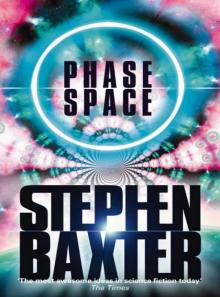 Phase Space
Phase Space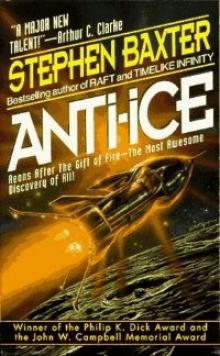 Anti-Ice
Anti-Ice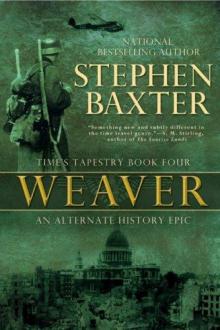 Weaver
Weaver Voyage
Voyage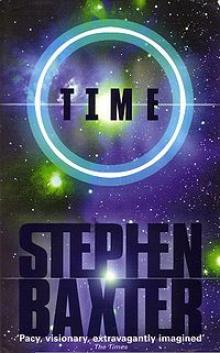 Time m-1
Time m-1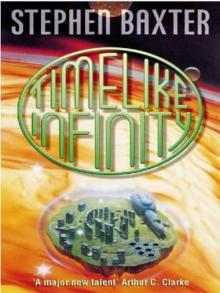 Timelike Infinity
Timelike Infinity Exultant dc-2
Exultant dc-2 Coalescent dc-1
Coalescent dc-1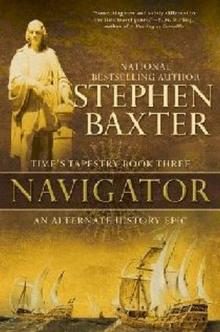 Navigator tt-3
Navigator tt-3